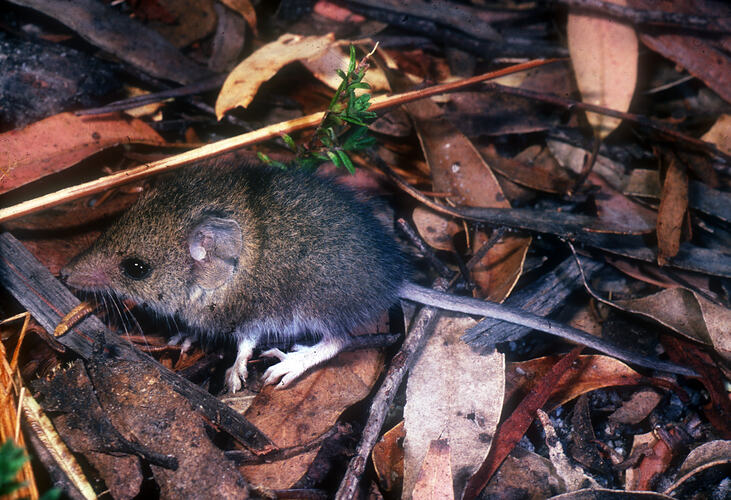General Description
Body fur light brown, white underneath. Nose pointed and ears large with a notch in the top. Indistinguishable from the Common Dunnart except by geographic distribution. Hind feet long and white. Body up to 11 cm, tail up to 9 cm.
Biology
White-footed Dunnarts eat invertebrates and sometimes small skinks. They make nests from bark under fallen logs or dense leaf litter.
Distribution
South-eastern mainland Australia and Tasmania.
Habitat
Range of habitats, including coastal areas, grassland, sedgeland, wet heath, and forests.
More Information
-
Animal Type
-
Animal SubType
-
Brief Id
Brown fur, pointed nose, long white hind feet.
-
Colours
Brown, White
-
Habitats
-
Where To Look
-
When Active
Nocturnal
-
Diet
Carnivore
-
Diet Categories
Insects, Arthropods, Lizards
-
Endemicity
-
Conservation Statuses
CITES: Not listed, FFG Threatened List: Vulnerable, EPBC Act 1999: Not Listed, IUCN Red List: Least Concern
-
Taxon Name
-
Scientific Author
(Gray, 1842)
-
Common Name
White-footed Dunnart
-
Kingdom
-
Phylum
-
Subphylum
-
Class
-
Superorder
-
Order
-
Family
-
Subfamily
-
Genus
-
Species Name
leucopus

